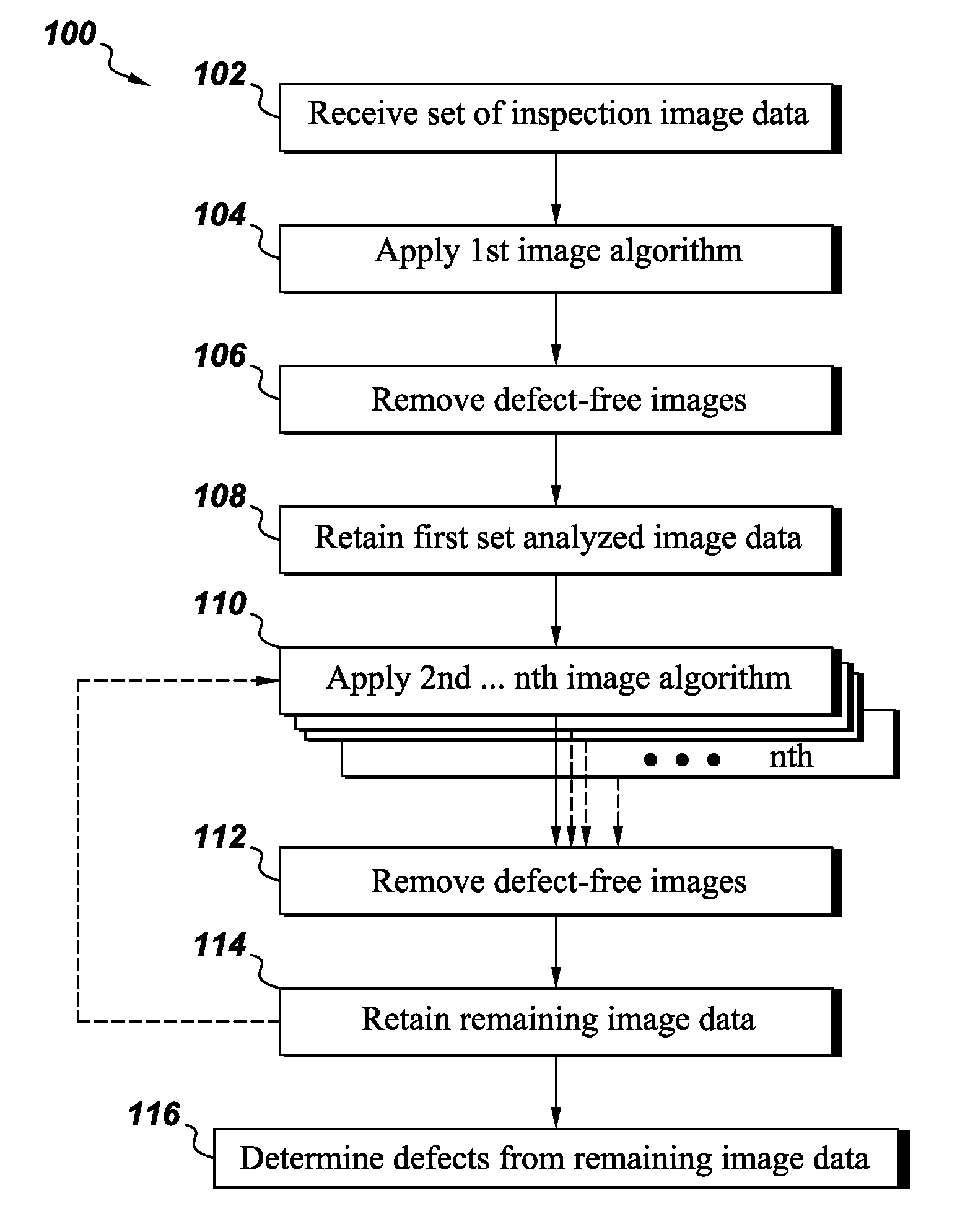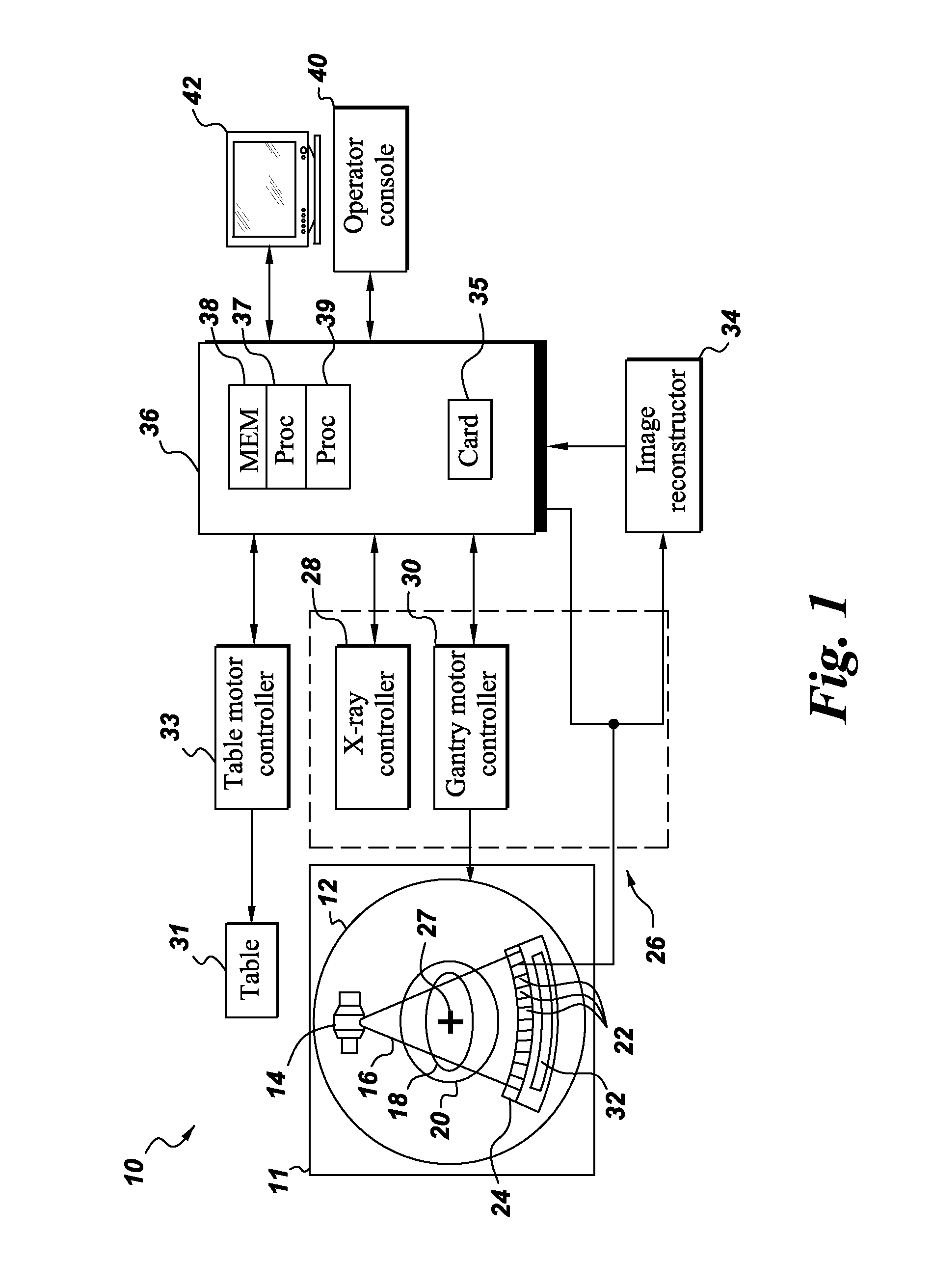Sequential approach for automatic defect recognition
a defect recognition and automatic technology, applied in the field of automatic defect recognition, can solve the problems of limited usability of adr systems, slow algorithms, and manufactured parts, and achieve the effect of eliminating the need for compromis
- Summary
- Abstract
- Description
- Claims
- Application Information
AI Technical Summary
Benefits of technology
Problems solved by technology
Method used
Image
Examples
Embodiment Construction
[0013]As discussed in detail below, embodiments of the invention are directed towards a sequential approach to automatic defect recognition (ADR). As used herein, the phrase ‘defect’ refers to a foreign object, foreign inclusion (e.g., sand), embedded defect, surface defect, a cavity, porosity, a bubble, a crack, a scratch, an indentation, combinations thereof, and the like. The phrase ‘cavity’ is a gas pocket at least partially enclosed by a gas / solid interface. If the enclosure is complete (i.e., the defective region is entirely surrounded by the solid, the cavity will be considered an ‘embedded defect’. Otherwise, the cavity will be considered a type of ‘surface defect’. The present invention addresses a system and methods of providing an automatic defect recognition technique, possibly in conjunction with computer assisted detection and / or diagnosis (CAD) algorithms. Such analysis may be useful in a variety of imaging contexts, such as industrial inspection system, nondestructiv...
PUM
 Login to View More
Login to View More Abstract
Description
Claims
Application Information
 Login to View More
Login to View More - R&D
- Intellectual Property
- Life Sciences
- Materials
- Tech Scout
- Unparalleled Data Quality
- Higher Quality Content
- 60% Fewer Hallucinations
Browse by: Latest US Patents, China's latest patents, Technical Efficacy Thesaurus, Application Domain, Technology Topic, Popular Technical Reports.
© 2025 PatSnap. All rights reserved.Legal|Privacy policy|Modern Slavery Act Transparency Statement|Sitemap|About US| Contact US: help@patsnap.com



